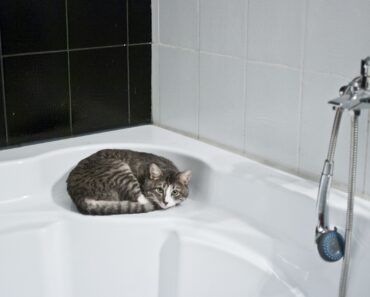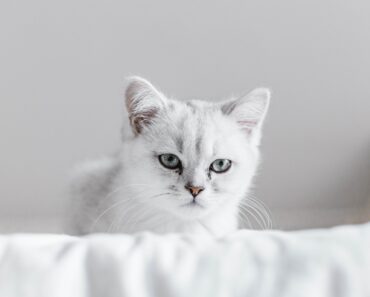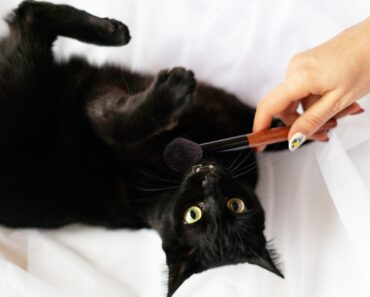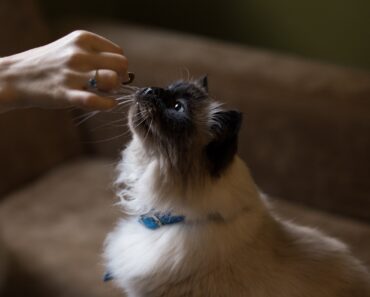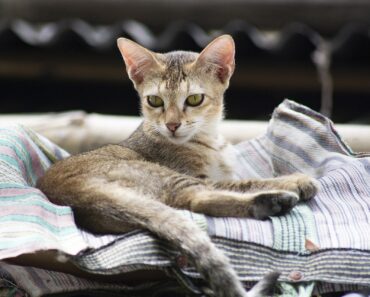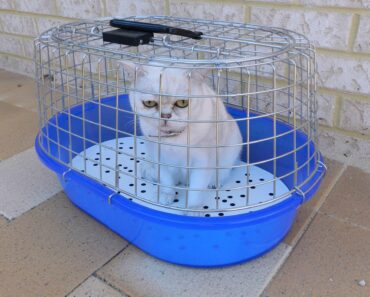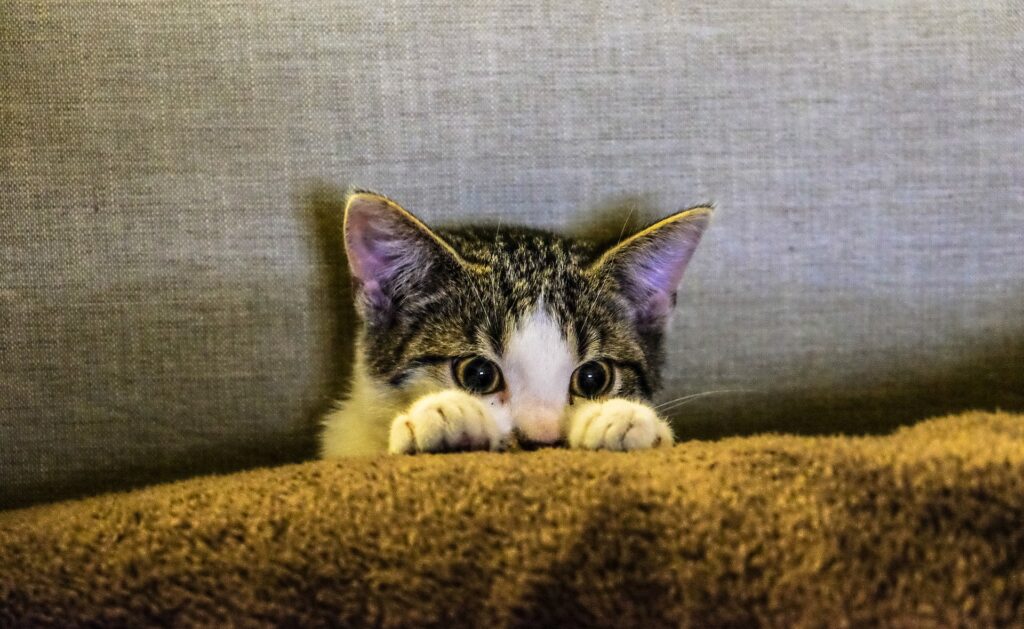
Haircuts can be very stressful for your cat if not done properly and professionally. If you decide to do the haircut yourself, without the help of a professional, and at home, you must first read the recommendations of professionals, so as not to harm your pet.
Tools needed
Grooming a fluffy pet can be done using only scissors as basic tools. Naturally, they should be rounded, sharp, and not too big.
But of course, it is better to use a trimmer (a special clipper). It’s perfectly safe and you won’t hurt your pet, and it’s faster and easier to use. The only problem that may arise is the noise of the trimmer. Your pet may be startled and run away. Trimmers are available for normal and hard-to-reach areas.
In addition, you will need:
- A comb with rounded teeth to avoid scratching your pet.
- Hydrogen peroxide and cotton in case you accidentally injure your pet.
- Bedding, such as an old towel that should be discarded after the event.
- A table or sofa, any horizontal surface where the cat can be comfortably seated.
- Something to distract the pet during the procedure, such as a toy or a dental bone.
Which one should I choose for my cat?
Retailers offer a very wide range of pet clippers, from expensive and functional to economical. The disadvantage of the cheap models is, first and foremost, their unstable and sloppy work – these models can cut hair badly or pull it out. Another disadvantage of cheap models is that they overheat during use and the animal can simply get burned. The lifespan of cheap trimmers is short.
As mentioned above, trimmers come in both conventional and hard-to-reach models. The latter are characterized by their small size and shorter blades (no more than 2 cm). Areas of anatomical curves, ears, muzzle, tail area can be trimmed with such a device. But it is rather an auxiliary tool that can not be used to trim a complete cut. For this purpose, the usual trimmers are used.
For representatives of particularly fluffy breeds with thick undercoat (sinners, exotics and others), choose devices with a power of not less than 45 watts, they will not overheat and will cope with a lush hair. Pay attention to the blades: they must be wide and sharp. The sharpness of the blades determines the speed and smoothness of the work. For cats with not very thick and long hair, you can use machines with a power of 20 watts.
A very useful option of the trimmer is the ability to automatically adjust the cutting surfaces. When choosing a device in the store, pay attention to this feature, because not all models are equipped with it. The minimum cutting length of 0.5 cm will result in a pet hair length of 0.5 cm after cutting. Very small blades are dangerous to use alone in the home as they can injure your pet.
Wall-mounted electric trimmers are preferable to battery-powered trimmers. They guarantee stable and long-lasting use. If you have to take breaks and stop often while trimming, the battery(ies) can run down very quickly. Even better are models that have both batteries and a network connection. The noise level produced by the unit is also important. The quieter and more pleasant it is to hear, the more the cat will appreciate it.
Make sure the machine is comfortable to hold. It should be moderately light and moderately heavy. A machine that is too light will be difficult to hold smoothly, while one that is too heavy will tire your hand quickly. So try to find the “happy medium”.
Pay attention to the shape of the handle, it should fit comfortably in your hand and not slip.
Be sure to check the machine before you buy it, especially for overheating and strange odors.
Shearing a hairy cat at home (step by step)
The order of handling for shearing a long-haired cat at home is as follows:
- Work tools should be disinfected before use.
- Then place on the animal’s claws (special silicone plugs) or trim the claws. For trimming, use the special clippers available in all pet shops. Gently press the cat’s paw and quickly trim the claws. If the edges are uneven, you can trim them with a nail file.
- If your cat is not used to the procedure and you are not sure of your abilities, you can hire an assistant: he will hold the cat and keep him busy. Put a plastic “Elizabethan” collar on the cat to protect it from biting.
- Start the treatment when the cat is sitting comfortably on its side on a table and its feet are secure.
- Shearing should begin at the sides. There should be no rushing or nervousness, otherwise your anxiety will be transmitted to the cat and it will also begin to behave in an agitated manner.
- The next step is the back and belly. Be careful when working on the belly. This is where the mammary glands are located and they can be easily traumatized. The clippers can be moved both in the direction of hair growth and in the opposite direction.
- If any unwanted hair remains after the clipper has worked, you can remove it with scissors.
- Try to pull your pet’s skin back slightly while trimming to minimize the risk of cuts. This is especially recommended when working with scissors.
- The tail can be left uncut when clipping is done for hygiene purposes. However, when your pet is being prepared for a show, it can also be trimmed, leaving just a nice pompom at the end of the tail. The tail is best trimmed with clippers.
- Once trimmed, the animal should be washed in warm water with pet shampoo and dried. You can use a hair dryer set on a gentle mode with a moderate temperature.
It is up to you to choose a basic tool for the size of your furry pet. Keep in mind that clippers don’t always do the trick and you’ll need to trim your hairstyle with scissors afterwards. Working with scissors alone is riskier for the cat, and the process is much more time consuming, but it ensures that your precious pet will look better. Only use the clippers when your cat is dry! Never get the hair wet if you intend to use electric clippers. Instead, when using a pair of scissors, it is advisable to wet the hair slightly, spray it with a spray gun and distribute the moisture over the hair with a comb. This facilitates the shearing process. It is not recommended to cut hair too short, regardless of the breed. Firstly, cutting the hair too short presents a risk of skin injury during the treatment, and secondly, the clipping should maintain normal thermoregulation of the animal and prevent it from getting cold afterwards.
How often should a cat be groomed?
If the procedure is done for hygiene purposes, the frequency depends largely on the breed and the quality of the hair. A cat’s hair grows back completely in about six months. Experienced breeders and veterinarians recommend trimming your cat’s hair two or three times a year and removing the hair in between with scissors.
You don’t want to overdo it. You need to be especially careful in the winter. Pet hair has a protective function. It’s best to have your cat’s coat shaved before the heat of the year, as long-haired cats have trouble with the heat of summer.
You should not force a haircut on an animal that is apprehensive about it. In such a situation, you can contact a veterinary clinic. Our veterinary technicians have extensive experience with all types of animals and know how to soothe the cat, suppress any aggressive behavior and perform the treatment as quickly and safely as possible.
How the cat changes after shearing
After shearing, you may notice changes in the cat’s appearance and behavior.
- External changes may include: a change in the previous hair color (darker, lighter), a change in hair quality (thicker, less frequent), or a change in the rate of hair growth.
- Internally, you may have to deal with a new behavior, especially if the event occurred in a nervous environment, if the cat was frightened or stressed. The pet may become fearful and stop trusting its owner.
At first, the animal may feel cold, even if it is warm. In this case, prepare blankets or buy a sweater for your pet.
What should you do if you accidentally injure your pet?
Even if you take the utmost care with the procedure, it is possible that an unpleasant situation could occur when you injure your pet. Be prepared for this and always have the necessary disinfectants (peroxide, broom, iodine) and cotton on hand. The disinfectant should not be applied to the wound itself, but to the surrounding skin. Treat the area of the cut to stop the bleeding. Soothe and pet the animal, and in this case you can prepare a treat to distract it.
Do not be nervous or lose your temper. Your anxiety will be transmitted to the animal and the cat will panic. Also, you should not yell at the cat or use physical force. You may proceed only when the cat has calmed down completely and allows the handling to continue.
It is quite possible to give your pet a hygienic haircut yourself. A hygienic treatment is necessary to keep your cat looking neat and to prevent it from suffering from the heat in the summer. But if your fluffy cat is getting ready to go out in public, for example to a show, you should call a grooming salon or a veterinarian. The professionals will do a better and more decorative job. The only thing to watch out for is that veterinary clinics usually administer a mild anesthetic or sedative. This is not totally harmless. If your furry pet is calm, you can do without these medications.

